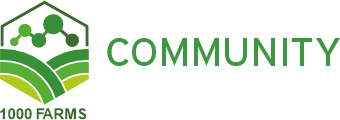Click on the link below to view the webinar by Tessy Madu from National Root Crops Research Institute, Nigeria, on 20 Feb 2025, presenting her talk Participatory Crop Evaluation: Tricot Trials on Cassava and Sweet Potato in Nigeria
Presenter Bio: Tessy Madu is a social scientist /gender specialist in charge of Gender Studies at the National Root Crops Research Institute, Nigeria and the Director of Planning, Monitoring & Evaluation (PME) Department. She holds a PhD in Rural Development.
For more info contact Tessy at: tessmadu@gmail.com
Summary: The project evaluated new cassava and sweet potato genotypes under real-world farming conditions by involving farmers directly in the assessment process. Farmers participated as ‘citizen science partners’ and evaluated three varieties out of a larger set. Using the tricot method, they ranked these varieties based on traits such as yield, disease resistance, taste, marketability, and food product quality. The trials were conducted in collaboration with the National Root Crops Research Institute (NRCRI), the International Institute of Tropical Agriculture (IITA), and the National Varieties Release Committee (NVRC).
| Question | Answer |
|---|---|
| How can I analyze tricot data using R? | All of our data was sent to ClimMob, and it was able to do the analysis for us, and that by plot I I displayed was the by plot that we got from the blanket list model. There are resources available to help with the analysis. I suggest going to the 1000FARMS project or 1000FARMS community website. Or get in touch with the Kaue de Sousa with your questions at k.desousa@cgiar.org. |
| 1) How did you select farmers? 2) Will it be possible to bring in a technician to do the work? | 1) We considered farmers that are highly knowledgeable with the crop and they had to be able to use android phones for the data collection. The lead farmers are selected by the farmers, as they know who among them has good leadership qualities. When they nominate those farmers, we train them on how to collect data. 2) The beauty of tricot is it is farmer-centric and farmer based. So bringing a technician to do the data collection would defeat the aim. And because the the data ranking is a very simple thing, ranked by best and worst, it’s something that the farmers can do and it’s more cost effective than bringing in a technician. The scientists only visit each plot about 3 times or so at the planting periods, at 9 months then 12 months. If there is too much research supervision, it would be more of a researcher centric trial. |
| Was there some resistance or skepticism about using tricot trials at the beginning of the project and if so, was it more from the breeders or the farmers? | There was so much skepticism. Initially, the breeders did not believe that farmers could generate data they could use. The only the way to reduce that skepticism is by integrating the breeders into the team. The breeders also go to the field with us, and they see what they are doing, and they have come to accept it. We also invited farmers into the Research Institute to interact with breeders. |
| Did you ever experience missing data and how did you overcome it? | Yes, sometimes. That is inevitable even in when you’re doing quantitative data collection. But on the whole, it is quite minimal because the farmers own the whole trial and what we are asking them to assess is very simple, ranking the best and worst. |
| 1) How did you determine the best overall variety? 2) Are individual farmers are doing the quality assessment or is that done in a standard way? | 1) We had a whole lot of data, agronomic data and data on processing and harvesting. All those were put together before we were able to nominate the best candidates for release and also for the processing. 2) We encourage the farmers to do the evaluation of the food quality together, so that the lead farmer is there to assess group by group. They can divide them, depending on the number under the lead farmer. They chose a place, a common place where they do the processing together. |
| Did you have any issues collecting quantitative data like yield? | Yes we measured yield. The researchers had a staggered visitation with the last visitation we did was at harvest. We were surprised at how big some of the cassava were, for example a particular cassava stand had over 20 kg roots when it was weighed. That is the one that they named Biggie. |
| I’m also involved in running a tricot trial on millet, sorghum, and groundnut, and one major issue is that the field agents measure the yield based on different quantities. How were you able to manage that? | The scientists were on ground to measure the yield at harvest. We go at planting to ensure that there’s no mixture. We then go at mid season to check, and then at harvest so that we can take the yield data. |

